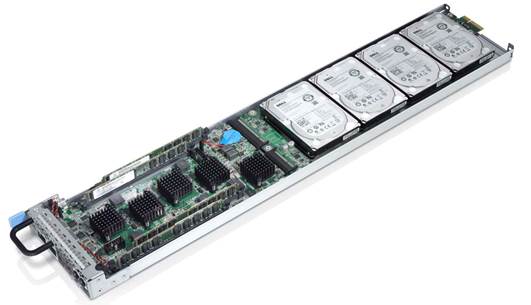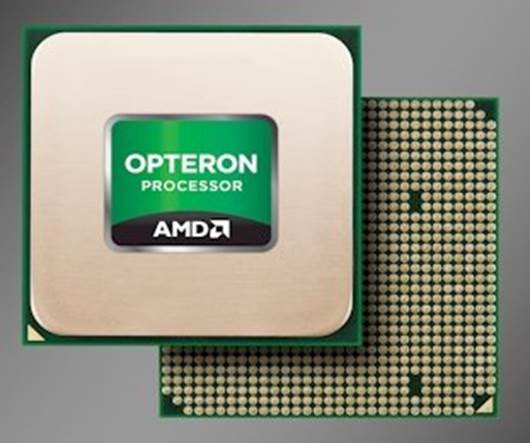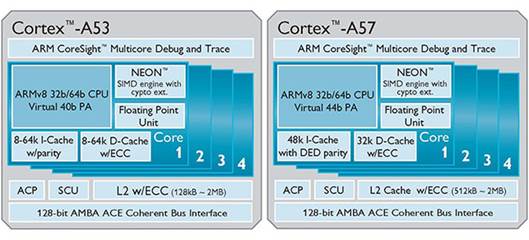The secret of ARM’s success lies in its
instruction set architecture, or ISA. Based on the concept of reduced
instruction set computing (RISC), ARM’s processors are significantly simpler
than the complex instruction set computing (CISC) products of its rivals. Where
a modern Intel processor may have between 700 million and 2.6 billion
transistors, ARM’s designs have a small fraction of that number. NVidia’s
dual-core Tegra 2 design, for example, has around 260 million transistors,
including those required for graphics processing and other tasks usually
carried out by discrete chips. Fewer transistors mean the chips are cheaper to
manufacture, take up less room in a system and draw less power - all key
features for the highly competitive mobile market.
“ARM isn’t happy with just its domination
of the mobile market, however”
For years, RISC processor designs struggled
to win market share against their CISC counterparts. The concept of a chip with
far simpler instructions that would execute faster was alien to many
programmers, who were used to the CISC way of doing things. It wasn’t until
mobile devices started to become popular that RISC would find a niche.
ARM isn’t happy with just its domination of
the mobile market, however. The company clearly remembers its origins on desks
up and down the country in the glory days of the microcomputer revolution, and
it won’t be satisfied until it’s back in its rightful place.

Dell
ARM server
Attacking The Data Center
A massively profitable area for Intel is
the data center, the buildings filled with servers that power modern life,
providing resources for everything from internet banking to online gaming.
Every major site you visit on the web is hosted in a data center, with larger
sites like Facebook having several dedicated buildings for this purpose.
Although Intel has some rivals in the data center market, including AMD, it
holds a majority share estimated at almost 95%, which is higher even than its
dominance in the laptop and desktop markets.
In short, it’s a market in which Intel
feels comfortable at least, until ARM started making waves.
ARM’s latest design, the ARMv8-A
architecture, powers the company’s new Cortex-A50 family of processors. On the
surface, ARM is still looking towards the mobile market, but dig deeper and its
true intentions become clear: it’s taking on Intel in the data center.
The ARMv8 architecture adds a variety of
enhancements that make little sense in a mobile device but are
near-requirements in the data center. As with its predecessor, the ARMv7-A
architecture, ARMv8 includes cryptographic acceleration, hardware
virtualization extensions used by server-oriented platforms like VMware’s ESX,
and for the first time comes in a true 64-bit implementation.

AMD
Opteron
The latter is the most important: server
CPUs have used a 64-bit address space for years, allowing them to access large
quantities of memory and work on larger data chunks in a single cycle. Previous
ARM architectures have been exclusively 32-bit, with the ARMv7a Cortex-A15
adding support for ‘virtual addressing’ to access more than 4GB of memory for
the first time.
The ARMv8 architecture, the biggest
architecture change in the company’s history, is able to access several
terabytes (thousands of gigabytes) of memory. That’s a feature mobile phones,
which today come with a maximum of 2GB of memory, simply don’t need. Combined
with CoreLink, a fabric interconnects designed to allow hundreds of processor
cores to communicate efficiently, ARM finally has what it needs.
The jump to a 64-bit architecture means an
assault on the data center, and it’s a move that has Intel worried. With the
growth of cloud computing (servers that provide thousands of clients with
storage or processing), interest is rising in many-core, low-power servers, and
that’s a market Intel has been ignoring for far too long.
ARM Servers
There have been small-scale trials of
ARM-based servers in the past, with HP’s Project Moonshot originally aiming to
use ARM chips before choosing Intel’s Atom processors and Dell announcing the
Copper 48-core ARMv7 server product for limited roll-out earlier this year.
Efforts have been hampered by a lack of true 64-bit parts, however - an issue
that ARMv8 has now solved.
As a result, increasing numbers of
companies are coming forward to partner with ARM on server products. AMD, a
long-time rival of Intel’s, has recently announced that it will be launching
ARMv8-based server processors under its Opteron brand in 2014, following a
top-secret partnership with ARM formed last year. Rumours have even suggested
that graphics giant NVidia is considering adding ARMv8 cores to its Tesla
high-performance parallel processing platform to increase its flexibility.

Dell
ARM server
It’s not just hardware companies that are
looking into ARM, either. Clearly recognizing that software support is key,
several companies have announced projects to port common server applications to
the ARM architecture. The Linaro Enterprise Group, a non-profit organization,
has recently welcomed new members from Linux vendors Canonical and Red Hat
along with social networking giant Facebook, one of the biggest consumers of
data center hardware in the world, while other software companies including opens
USE have announced their own ARM porting efforts.
Software is key to a platform’s success.
Intel is struggling to convince companies to use its x86 architecture in
mobile, where software is optimized for the ARM architecture, and ARM is going
to have the same struggle getting its chips into the server market. With companies
like Red Hat, Canonical and Facebook onside, however, the problem is far from
insurmountable.
By 2015, it’s likely that numerous
off-the-shelf ARM-based servers will be available from a variety of companies,
with a software ecosystem that means they will be drop-in replacements for
x86-based servers in a large number of cases. These servers will appeal to the
cloud computing market, where the ability to run numerous low-complexity
processing threads simultaneously is valued far above the ability to run a
small number of high-complexity processing threads - something at which Intel
processors traditionally excel.
With ARM chips offering the potential for
greater density (the number of processing cores you can fit in a given space)
and significantly reduced power intake and heat output, rapid growth in the
server market is likely.
That’s a scenario which could prove bad
news for Intel.